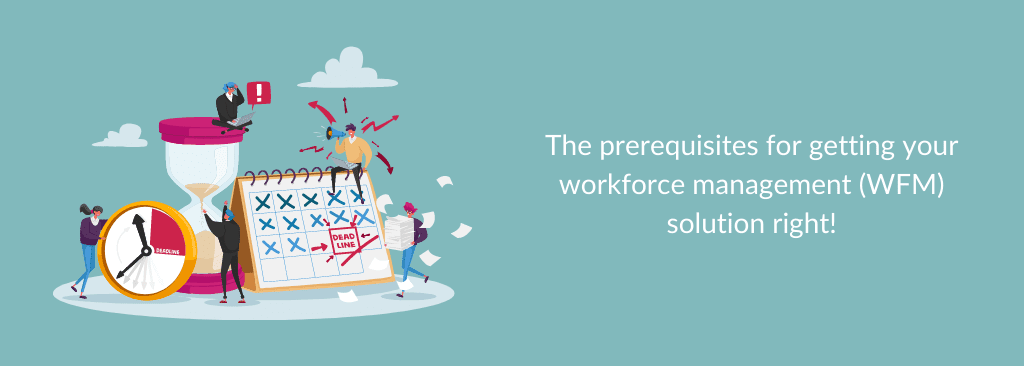Get Your Workforce Management (WFM) Right: Steps to Improve CX and Efficiency
Are You Familiar with These CX Scenarios?
- You call up the customer service function of your vendor, and you are put on hold endlessly
- You raise an email complaint about a product that you purchased, and you don’t get any response from your vendor
- You want to return a defective product, and no one turns out to pick up the product
- You send a message to the social media handle of your vendor, and no one bothers to respond to you
- You interact with the chatbot of your vendor about an issue that you face with your purchase, and the chatbot just doesn’t understand your query
In all of these cases, the organization’s likelihood of not retaining you as a customer is very high. The experience that you receive is severely affected.
Some of the possible reasons are that you are understaffed, and the people with the right skills are not available at the right time to answer the right questions.
How WFM Helps You Overcome CX Challenges
It would help if you had a workforce management solution to handle most of your issues. Let us take a moment to define what workforce management is.
Workforce Management (WFM) ensures that an organization has the right people with the right skills doing the right tasks at the right time.
This sounds interesting. However, how does it solve my challenges, and how do I go about implementing WFM?
How Do You Get Your WFM Solution Right?
1. Forecasting Is Key
You start with forecasting your expected interactions and their volumes across channels. How are you certain that your forecasting is going to be right?
For this, you need to analyze your raw data sources, and they better be good data sources. You have to integrate your WFM with those data sources. If your data is garbage, you will only get garbage.
For instance, if your data suggests that your contact center would have 500 interactions this Tuesday, with the interactions spread 4:3:2:1 between phone, chat, email, and social. Then, you need to have the right people in the right place, with the right skill set, so that your customers are happy.
You have to keep in mind that you have to forecast for both short-term and long-term volumes as you cannot staff your needs on an intraday basis.
2. Scheduling Agents Efficiently
Once you have your forecasting volume right, you are good to schedule. However, you will have to keep your employee mix and the associated constraints in mind. Some of them could be working moms, students doing part-time, and people who would be available only during specific time slots.
You will have to consider all of these and schedule the right people at the right place handling the right tasks.
When choosing the right workforce management solution, it’s important to consider not just scheduling and forecasting, but also how AI-powered workforce management can enhance overall efficiency.
3. Monitor, Measure, and Optimize Workforce Performance
Well, you have your forecast ready and scheduled the right people to address your customer interactions. If everything shows up as expected, there is nothing like it.
But, you will have to measure the actuals:
- Did the interactions happen per the forecast and schedule, or was there a variance?
- Did you understaff or overstaff in reality?
- What corrections should you be looking at?
Having the forecast and the schedule is the best place to start implementing your WFM. But, the actuals may vary, which has to be accounted for and optimized in the future. With this, you would be able to get your WFM and workforce optimization right to provide the best possible customer experience.
Then comes the integration, automation, and usability of the WFM solution. This is a crucial topic, and we will take that up as a separate blog.
